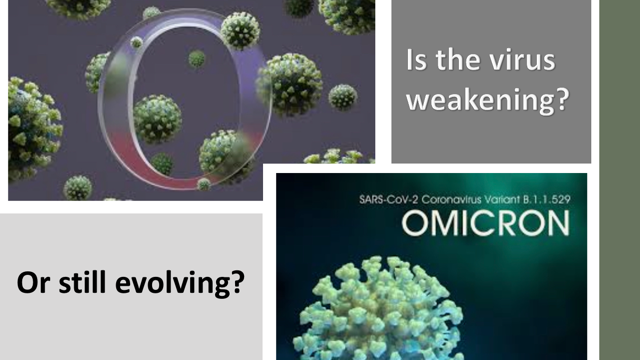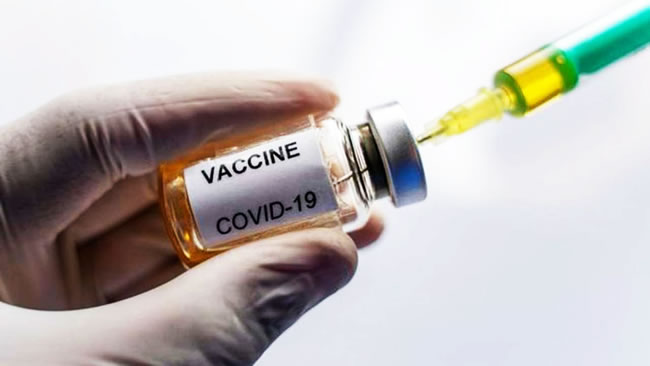By Dr Gabriel Uguru
In late 2019/ early 2020 the world was hit with the arrival of a new infectious virus. The new kid on the block so to speak, is the much respected and feared Coronavirus SARS-CoV-2, which causes the disease condition, COVID-19.
After much political wrangling about whom to blame for this unwanted gift, and amidst much political, cultural, religious, and ignorance-fuelled disinformation and misinformation; the world went through the normal five stages of grief: denial, anger, bargaining, depression and finally acceptance (of a new way of life) – that of accommodating the virus.
In the mean time, while the politicians were losing their heads, bickering and doing anything but stop the virus from spreading and killing their citizens, cooler heads in the scientific community recognised the danger the virus posed to humanity and quietly went about finding ways to checkmate the virus.
Join our WhatsApp ChannelThe fear of Coronavirus is the beginning of wisdom, which the politicians failed to understand but the scientists, NGOs and some few responsible world leaders with their heads firmly screwed on, did. By their concerted efforts, vaccines were developed in record-breaking time. These vaccines have saved an estimated 1 billion people worldwide from death or severe hospitalisations from the virus. In the US and Europe alone, the estimate was 750 million lives saved by vaccines!
The virus as intelligent as it was deadly began to evolve and before long, we have four variants declared by the World Health Organisation to be of health concern. These are the Alpha, Beta, Gamma and Delta variants. These variants were deadlier and more transmissible than the wild-type (or original) virus. The vaccines were still able to cope to a certain degree with these variants, and just when we thought that we had checkmated the virus, in late November 2021, it presented us with an early Christmas gift. The present was the Omicron variant.
The Omicron variant is reputed to have acquired 50 genetic mutations with 30 of these mutations occurring in the spike protein alone! The Omicron variant in evolutionary term is an outstanding evidence of natural selection given the extensive mutations it had acquired and its hyper-transmissible gain of function.
As most of us know, the spike protein is the weaponised part of the virus that binds with human cells, enabling the virus to gain entry. These mutations especially in the spike protein are expected to (and indeed do) make the virus more transmissible and more likely to evade immune protection than other variants.
Hoffmann and coworkers in their recent publication in the journal, Cell, reported that, “the Omicron S protein [spike protein] evades antibodies with up to 44-fold higher efficiency than the spike of the Delta variant…”
Whether these mutations make the virus more dangerous in terms of causing death or severe hospitalisations is another matter. But by all indications so far, the Omicron variant is benign compared to the other four variants of concern.
Hardly any household in the US, England and the EU over the festive period escaped from a visit by Omicron, yet the death toll remained very marginal taking into account the large number of people infected within so narrow a timeframe, and also when compared with infections by previous variants.
The same format was seen in South Africa where the variant was first detected. Some schools of thought did argue that South Africa is not the best place to read the effects of the Omicron variant. The reasons advanced were that South Africa is composed of younger generations, the population has high immunity to COVID-19 due to exposure to different infections, and that more than 40% of the population are immunised.
In Europe and the US there is high vaccination amongst the populations, too. These reasons may be true, but the inescapable fact is that the virus is continually changing. Whether such changes are progressive or retrogressive to the virus is another issue.
Coronavirus does the most damage in the lungs, setting off inflammatory immune responses, which destroy both infected and healthy cells and tissues. This destruction causes oxygen deprivation and tissue damage, and in most cases leads to death or severe hospitalisations. But there are documented evidences that the Omicron variant is unable to infect cells deep in the lungs as efficiently as other variants, sometimes ten times less efficiently in comparison with other variants.
The Omicron’s inability to efficiently infect lung cells meant that the disease condition is milder. But the hyper-transmissibility seen with the Omicron variant also meant that the variant is potentially more dangerous than other variants in economic terms. For example, there are currently huge manpower shortages across Europe and in the USA as many people infected with Omicron are convalescing either at home or in the hospital. More than 20 football fixtures in the English Premier League were cancelled between December 2021 and the middle of January 2022 due to cases of COVID-19 infections among players. Also, there is increase in hospitalisations, especially amongst the unvaccinated who are principally bearing the brunt of the Omicron attack. This increase in hospitalisations is threatening to bring down healthcare systems in many countries.
The Omicron variant has been credited with high percentage of re-infection of convalescents (persons who had previously been infected with COVID-19), convalescent-vaccinated (persons who had been infected with COVID-19 and were later vaccinated), and the vaccinated-convalescent (those who had been vaccinated and later had breakthrough COVID-19 infection).
In most observed cases of the Omicron infection, the symptoms were mild, mostly aches, mild fever, coughs and fatigues. In some cases the symptoms were even asymptomatic. But the danger with the benign nature of the Omicron variant is that we may take our eyes off the ball, after all, familiarity breeds contempt. To show the “contempt” some governments now have for COVID-19 all in a bid to keep the economy going and the electorates happy, the UK for example, are proposing from Monday 17 January 2022 to cut the isolation period from 7 days down to 5 following two negative lateral flow device (LFD) COVID tests! The original isolation period was 10 days but was cut in December 2021 to 7 days only. The scientific basis that informed this decision were data from the UK Health Security Agency, which suggested that two-thirds of people are no longer infectious after five days of isolation. But current data show that the practice of ending isolation at 7 days means that about two in five infectious cases will be missed. And to further cut the isolation period to 5 days increases even more the risk of spreading the virus!
Current data available point to the fact that the COVID-19 disease condition caused by the Omicron variant is less severe, but what the public and policy markers should not forget is that there are still other nasty Coronavirus variants out there, like the Alpha and Delta. Every COVID-19 incidence is not by the Omicron variant, therefore, we should continue to show the virus the healthy respect it deserves…… for, the fear of COVID-19 is the beginning of wisdom!
















Very informative article! Thank you Gabriel! We all hope that the pandemic will be in the history by the next year👍